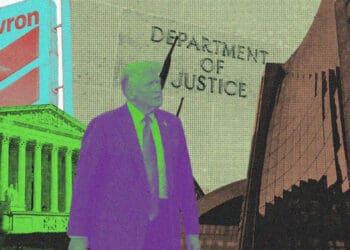ICOs Are Challenging Basic Assumptions
If the SEC attempts a more robust approach with initial coin offerings, the broader market’s reaction with be fascinating. In this article, Christian Auty article examines why ICOs present a challenge for the SEC and how this impacts regulatory oversight.
According to the SEC, about $50 billion in new securities were issued in the 1920s alone, and by the end of the decade, about half were worthless. It was a catastrophe that produced real doubt about the public’s willingness to participate in such markets going forward. The causes of the crash were numerous, but it was clear that the public’s mistrust of the market was not misplaced. An investigation by the Senate Banking Committee in 1932 found that “the country’s most respected financial institutions knowingly misled investors as to the desirability of certain securities … and offered privileges to insiders not afforded to ordinary investors.”[1] To restore confidence, Congress passed the Securities Act of 1933 and the Securities Exchange Act of 1934. Since then, if you wanted to offer securities to the public, you needed to go through the SEC.
There are, of course, exceptions. Private investment solicitations are permitted, but they are generally limited to “accredited investors,” people with high salaries or a high net worth. Individuals with lower salaries or a lower net worth have been, generally speaking, shut out of early-stage speculative investments, until now.
What is an ICO?
An initial coin offering (ICO) is very simply the offering of a coin or token to the public. ICOs offer the coin at a set price to investors. But, unlike IPOs, ICOs don’t happen on a stock market. There are no underwriters, no teams of investment bankers digging through financials and no teams of lawyers drafting a giant prospectus.
ICOs happen on a blockchain. The coins are distributed to investors on a blockchain created by the offerors or to accounts held by the investors on an existing blockchain platform. In exchange for the coins, the investors send established cryptocurrencies (for example, Bitcoin) to an account designated by the ICO offerors. The exchange rate is agreed upon in advance and typically proceeds in stages, with the earliest investors getting the best price.
Recently, there has been significant interest in ICOs, not only from cryptocurrency enthusiasts, but more generally from established entrepreneurs and investors. Many believe that the bulk of these ICOs are scams. Others believe them to be one of the most unique opportunities in a long time — a chance to get early and unregulated exposure to an industry and a concept, namely the blockchain, that will explode in the coming decades. One of these ICOs, they reason, might just be the next Google. No doubt, the truth lies somewhere in the middle. Some are scams, but others may support truly revolutionary technology.
ICOs, Blockchains and Smart Contracts
As noted above, ICOs happen on blockchains, not public markets. The most famous blockchain is Bitcoin. Bitcoin is easily the most popular and most valuable (measured by market share) cryptocurrency. It remains the reserve currency of choice for cryptocurrency traders around the world. It is the modern, digital equivalent of gold bullion. But if you ask experts in this area which blockchain (or platform) owns the future, a healthy number will tell you it is called Ethereum.
What makes Ethereum different from Bitcoin? Many things, but here are two important differences for our purposes: (1) Ethereum allows code to be executed on its blockchain, which means that it can act very much like a regular computer; and (2) as a consequence, Ethereum enables the creation of smart contracts. Vitalik Buterin, a creator of Ethereum, defined smart contracts to mean “systems which automatically move digital assets according to arbitrary pre-specified rules.”[2] An ICO smart contract is, basically, an agreement between two or more accounts to move cryptocurrency between them. It is written in computer code on the blockchain, viewable by all. The smart contracts powering ICOs are relatively simple agreements, legally speaking: they are very much like digital escrow agreements with a set rate of exchange between two currencies.
By providing a platform for the execution of smart contracts, Ethereum lets investors, through their accounts, enter into these exchanges and receive ICO tokens. The investor knows they are not getting robbed because they have a chance to review the code in advance; indeed, the smart contract in this sense is the code.
The Regulatory Implications of ICOs
Of course, there are myriad regulatory and legal issues with this type of funding. First, in what sense is this really a contract? Which law applies? How is it enforced if breached? What about outright fraud? What if somebody changes the terms or uses the terms in a way that was not intended[3]? This is the problem with computer code as a contract in and of itself. It fails to answer a host of questions about what happens if something goes wrong. When a contract consists of computer code, there is no equity to fall back on.
Second, what is being bought? I have used the term “investor” throughout, but many ICO offerors are emphatic in their communications that these tokens are not shares in an enterprise, nor are they currency on an exchange. They may have no use at all, and “investment” in an ICO may be nothing more than a donation. But the reality is that many of these tokens have value either because of use-value or because secondary markets say they do — Ether, the Ethereum token which powers transactions on the Ethereum blockchain, was priced at less than a dollar for its ICO and now trades for hundreds in very liquid secondary markets. It would be naïve to say that the interest in ICOs is based solely on enthusiasm for the concepts.
In June 2017, Bancor’s ICO raised $150 million in Ether and Bitcoin in a matter of hours. More recently, on July 2, Block.One announced it had raised $185 million in just over a week, despite deliberately attempting to avoid a rapid influx of funds by committing to a yearlong sale process. Tezos raised nearly $200 million in its first two days of a weeklong ICO. In short, like the stock market in the 1920s, the money is pouring in, it is coming from everywhere and it is largely unregulated.
If nothing else, it is clear that existing regulations in the area of early-stage investment are constraining robust demand for risk. Funding that would have taken years in Silicon Valley through multiple venture capital rounds, difficult conversations about board seats, analysis of financials, etc., is now accomplished in the space of days, if not hours.
The Regulatory Challenge
ICOs in particular, and the blockchain in general, are challenging fundamental assumptions and regulatory paradigms. The SEC is no doubt paying attention, but to date the SEC has done little to address ICOs. When the SEC does attempt a more robust approach, the broader market’s reaction will be fascinating. Will platforms decide to partner with the SEC to foster legitimacy, take the approach of Uber and seek to scale to inevitability notwithstanding regulatory scrutiny, or something in between?
The best approach ultimately may be a cooperative one. Instead of unilateral and misguided efforts to apply old regulatory strategies to new structures, such as New York’s recent BitLicense regulations (which will only cause flight from the jurisdiction), regulators must work to understand and indeed facilitate the development of new technologies on the blockchain, and ICOs can play a part. Heavy-handed regulation in this area will only push investment elsewhere. A good example to follow is that of Switzerland, which already has attracted a robust cryptocurrency community and recently introduced a “sandbox” approach to regulating smaller enterprises that exempts these entities from certain regulations applicable to large banks. While some regulation may ultimately prove desirable to foster legitimacy with the wider public, a supportive, incremental approach that allows for plenty of experimentation by entrepreneurs will prove most beneficial.
This is surely new ground for the regulators. Blockchains (and consequently ICOs) stretch across nations, governments, currencies and customs. They are, by and large, anonymous, immutable and encrypted by design. Early-stage risk, which used to be the province of VC funds and accredited investors, is now looking very democratic, and these new investment vehicles, given their anonymous and distributed nature are perhaps unstoppable. ICOs will not be easily regulated. And perhaps they shouldn’t be.
Author’s note:
Following the submission of this article, the SEC indeed issued an investigative report concerning the Distributed Autonomous Organization (the DAO) created in early 2016 on the Ethereum blockchain. The SEC concluded that the tokens issued by the DAO “were securities and therefore subject to the federal securities laws.” The SEC also concluded that the DAO itself was an issuer of securities and that third-party exchanges and other secondary markets created for buying and selling cryptocurrency tokens like the DAO tokens are required to register under the Exchange Act, unless a specific exemption applies.
The SEC’s conclusion is limited, in that the report (available here), concludes only that the DAO token was a security, not that all ICOs necessarily are securities offerings. But this is a clear warning. The SEC is going to regulate ICOs that look like share sales as unregistered securities offerings, and the Commission appears to have confidence in its ability to do so. It is not all bad news, however. The SEC acknowledged that ICOs are not necessarily share sales, stating in its press release that “[w]hether a particular investment transaction involves the offer or sale of a security – regardless of the terminology or technology used – will depend on the facts and circumstances, including the economic realities of the transaction.” In other words, the SEC will apply the Howey test to ICOs going forward and it may very well be the case that certain tokens, especially those with independent use value, are not securities at all. Indeed, Ethereum did a crowdsale of Ether tokens in the Summer of 2014, yet the SEC refers to Ether as a “currency” on more than one occasion in the report.
[1] https://fcic-static.law.stanford.edu/cdn_media/fcic-testimony/2009-1116-Moss-article-2.pdf.
[2] http://www.the-blockchain.com/docs/Ethereum_white_paper-a_next_generation_smart_contract_and_decentralized_application_platform-vitalik-buterin.pdf.
[3] https://www.bloomberg.com/features/2017-the-ether-thief/



 Christian Auty is a Principal at law firm Much Shelist. An experienced litigator, Christian has an established reputation as a strong client advocate and is well-versed in issues on the intersection of law and technology, including data privacy and data breach response, electronic discovery, data storage and retention practices and information governance.
.
Christian Auty is a Principal at law firm Much Shelist. An experienced litigator, Christian has an established reputation as a strong client advocate and is well-versed in issues on the intersection of law and technology, including data privacy and data breach response, electronic discovery, data storage and retention practices and information governance.
.









